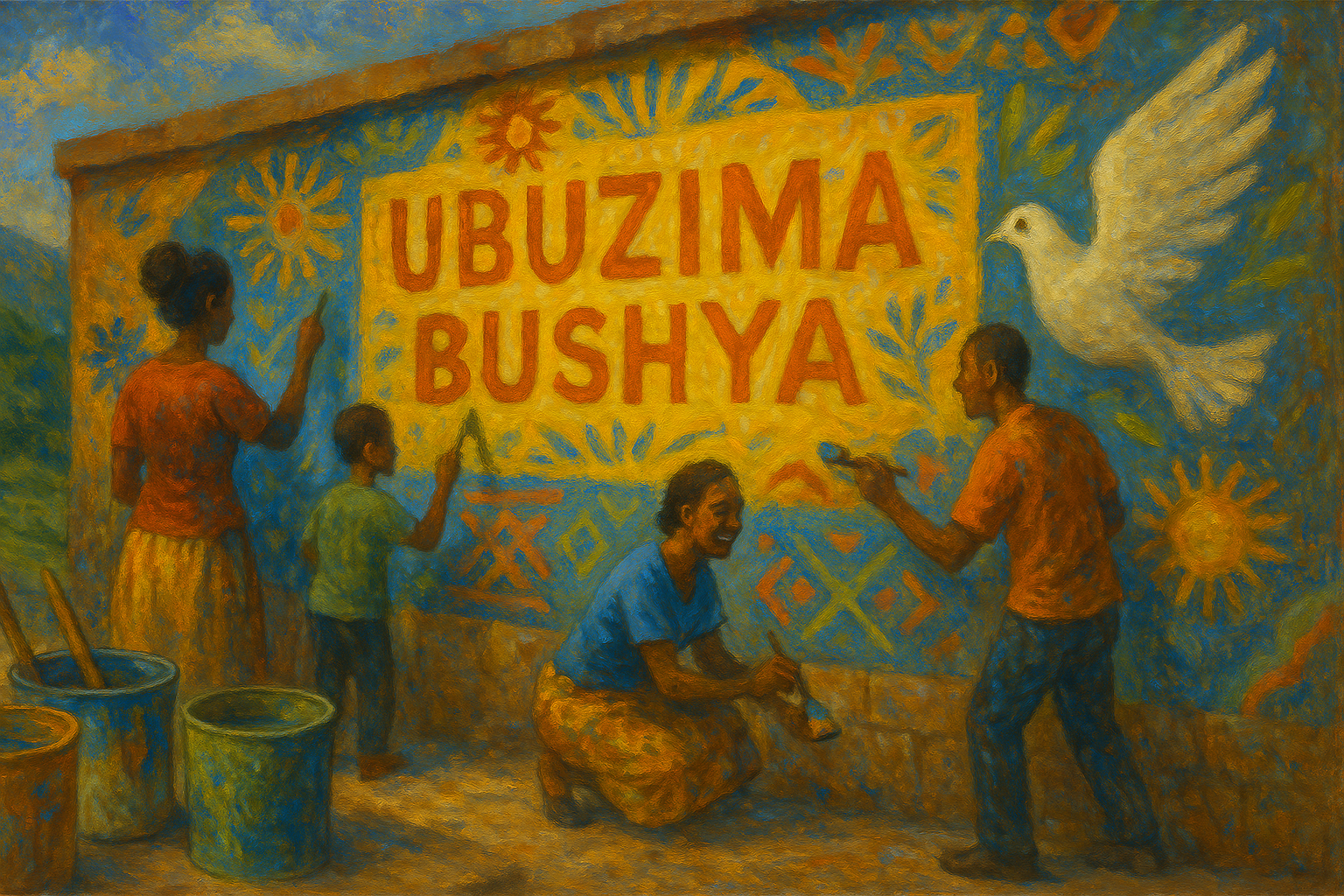LA NUEVA VIDA DE RUANDA TRAS EL GENOCIDIO DE 1994
En 1994, Ruanda vivió uno de los episodios más oscuros de su historia. Durante cien días, el país fue testigo de un genocidio que dejó cerca de un millón de personas asesinadas, la mayoría pertenecientes a la etnia tutsi. Esta ola de violencia, planificada y alentada por una maquinaria propagandística llena de odio, no solo se cobró vidas humanas, sino que también destrozó el tejido social y cultural del país. Los supervivientes quedaron profundamente marcados por la pérdida de sus seres queridos, el colapso de comunidades enteras y las cicatrices imborrables de un trauma colectivo.
En un contexto tan devastador, el arte comenzó a surgir como una herramienta inesperada y poderosa para la sanación y la reconciliación, un faro de esperanza en medio de la desolación. Así, las comunidades han encontrado medios para reconstruir el tejido social y fomentar un sentido renovado de unidad y esperanza.
Por ejemplo, proyectos como The Rwanda Healing Project han utilizado el arte visual, el teatro y la música para crear espacios donde las personas pueden expresar su dolor y encontrar consuelo en la creación compartida. Esta iniciativa ha promovido talleres en los que los supervivientes trabajan juntos para pintar murales o crear piezas artesanales que reflejan sus historias, mientras que las obras teatrales han facilitado conversaciones difíciles y, a menudo, catárticas entre los perpetradores y las víctimas.
Otra iniciativa destacada es Kurema, Kureba, Kwiga (Crear, Ver, Aprender), un programa de arte comunitario que ha embellecido las calles de Kigali y otras localidades con murales coloridos que transmiten mensajes de unidad, fortaleza y renacimiento. Estas obras no solo adornan los espacios públicos, sino que también funcionan como recordatorios tangibles de que la convivencia pacífica es posible, incluso después de una tragedia tan devastadora.
Desde Kripties Fundación queremos y alentamos a explorar colaboraciones con estas iniciativas artísticas ya establecidas y con otras nuevas, ejemplos vivos del poder transformador del arte en situaciones de postconflicto.
Tan importante como ello es dar a conocer estas historias que no solo honran a quienes sufrieron y sobrevivieron, sino que también inspiran a otros lugares del mundo donde la división y la violencia amenazan la estabilidad social. Mostrar cómo Ruanda ha utilizado el arte como una herramienta para la recuperación puede servir de modelo para otras comunidades, subrayando que el respeto por los derechos humanos y la dignidad humana siempre deben estar en el centro de nuestras acciones.
RWANDA’S NEW LIFE AFTER THE 1994 GENOCIDE
In 1994, Rwanda experienced one of the darkest episodes in its history. For one hundred days, the country witnessed a genocide that left nearly one million people dead, most of them belonging to the Tutsi ethnic group. This wave of violence, planned and fueled by a hate-filled propaganda machine, not only claimed countless lives but also tore apart the social and cultural fabric of the nation. Survivors were deeply scarred by the loss of loved ones, the collapse of entire communities, and the indelible marks of collective trauma.
In such a devastating context, art began to emerge as an unexpected and powerful tool for healing and reconciliation—a beacon of hope amid the desolation. Through creative expression, communities found ways to rebuild social bonds and nurture a renewed sense of unity and hope.
For example, initiatives like The Rwanda Healing Project have employed visual art, theater, and music to create spaces where people can express their pain and find solace in shared creativity. This project has promoted workshops where survivors work together to paint murals or create handcrafted pieces that reflect their stories, while theatrical performances have facilitated challenging and often cathartic conversations between perpetrators and victims.
Another noteworthy initiative is Kurema, Kureba, Kwiga (Create, See, Learn), a community art program that has transformed the streets of Kigali and other locations with colorful murals conveying messages of unity, strength, and rebirth. These artworks not only beautify public spaces but also serve as tangible reminders that peaceful coexistence is possible—even after a tragedy as profound as this.
At Kripties Fundación, we hope to foster collaborations with these established artistic initiatives and other new efforts, living examples of art’s transformative power in post-conflict situations.
Equally important is spreading these stories, which not only honor those who suffered and survived but also inspire other regions around the world where division and violence threaten social stability. Showcasing how Rwanda has harnessed art as a recovery tool can serve as a model for other communities, underscoring that respect for human rights and human dignity must always remain at the heart of our actions.


 Ilustración: Juan Esteban.
Ilustración: Juan Esteban. Ilustración: Juan Esteban.
Ilustración: Juan Esteban.